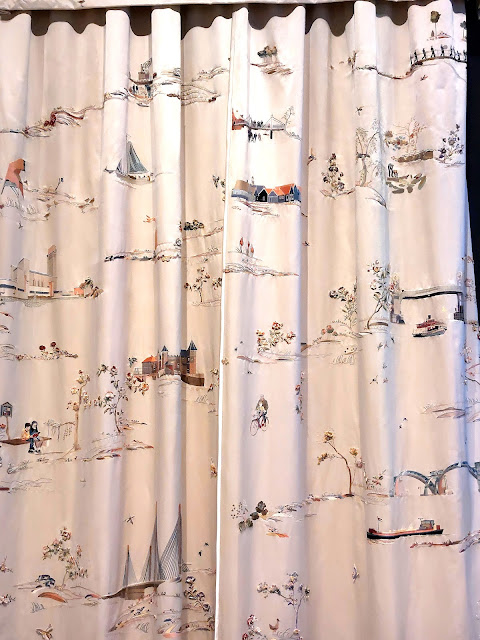Tilburg isn’t exactly a town to lift one’s spirits, especially not on a dreary and miserable day in early spring, when the rain batters the car windows and one feels the sun will never show itself again. Google guiding me through part of the centre of town to my destination, I noticed hardly any front gardens, public gardens, parks, open spaces or colourful and exciting buildings. Tilburg is a former industrial town, an industry which once thrived but was hit hard in the mid-20th century. Textile industry was the main source of income and wealth, offering good jobs to many laborers. The linen and damask tablecloths and beautifully woven bed linen was famous, and so were the woollen blankets. All that has gone. Brides to be do no longer get married till after having collected a chest full of sheets, blankets and tablecloths meant to last them a lifetime. Woollen blankets were replaced by eiderdowns. Women were no longer full-time housewives and started working as well. They did not have time to launder and iron linen tablecloths. What remains in Tilburg is a museum, the Textile Museum, in the old mill. The huge hall still houses many looms. They are impressive, high and sturdy, but most of them have lost their function. Videos about times past and the heavy labour in the textile industry can be viewed. Some new looms which can be worked automatically, are still in use producing custom made articles, or woven items such as tea towels, tablecloths and scarves still on sale in the museum shop. But all that is on a small scale. There is a textile lab, where innovative ways of weaving are tested and researched.
I came to see something unique, three pairs of tall silk curtains, embroidered partly by machines, partly by hand. These curtains are destined for the royal palace in The Hague, the residence of the royal family. The palace has a famous Chinese room, with Chinese embroidered curtains, all silk, with pictures and scenes of daily life in a still rural China. They have to be replaced as they are falling apart and need to be conserved. The idea was to replace them with silk curtains embroidered with typically Dutch buildings and scenes of daily life in The Netherlands today, and so to preserve our material and immaterial heritage.
Finding the right silk and the matching silk threads and yarns for the embroidery was quite a challenge. All the main scenes, buildings, bridges, ships, towers and other features, were embroidered by machines. The flowers, birds and trees which embellish the curtains, were embroidered by hand, involving some 150 people taken from all the provinces and all the nationalities now represented in our country. Those flowers, birds and other embellishments were later attached to the curtains by hand, and add some depth to the scenes. The curtains are finished now and on display in the Museum till this summer when they will be hung in the Chinese room of the palace and will then no longer be accessible to the public. It was an amazing display. The curtains are stunning and the story around designing and producing them is fascinating. Interviews with the embroidery groups who did the hand stitching, with professionals who researched the correct colours of the silk, with the people who had to find the right machines, who did tests etc., can be watched on videos. The Museum is full of colour, outside the world was wet and grey and dull. I thoroughly enjoyed my visit, and given the miserable weather was glad that I did not have to drive back home again, but had booked a hotel just on the outskirts of a totally different village or rather small town nearby, with a very attractive centre. But that is another story.
















No comments:
Post a Comment